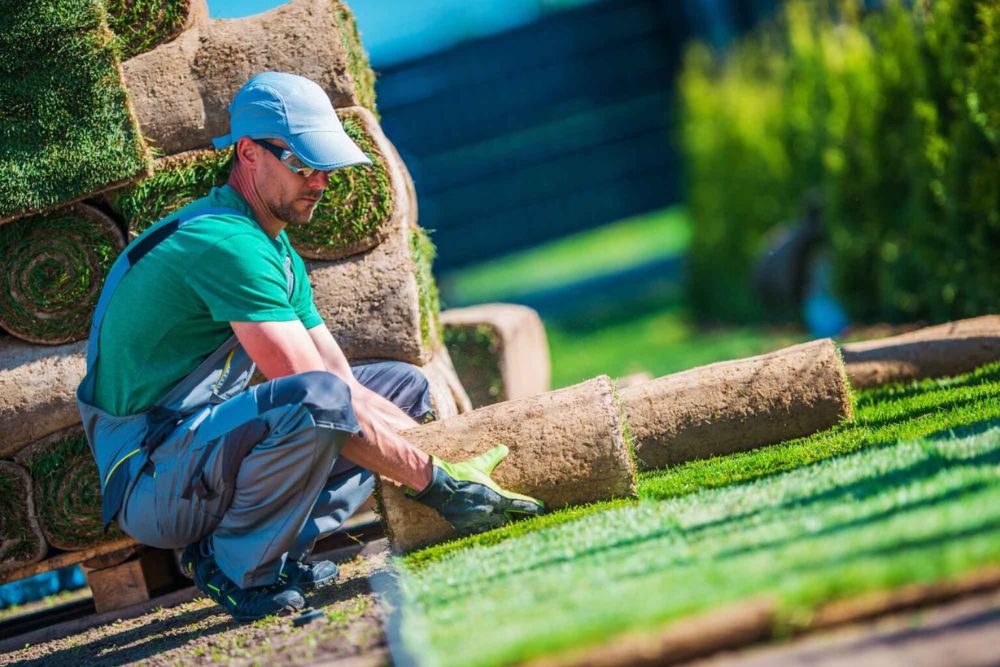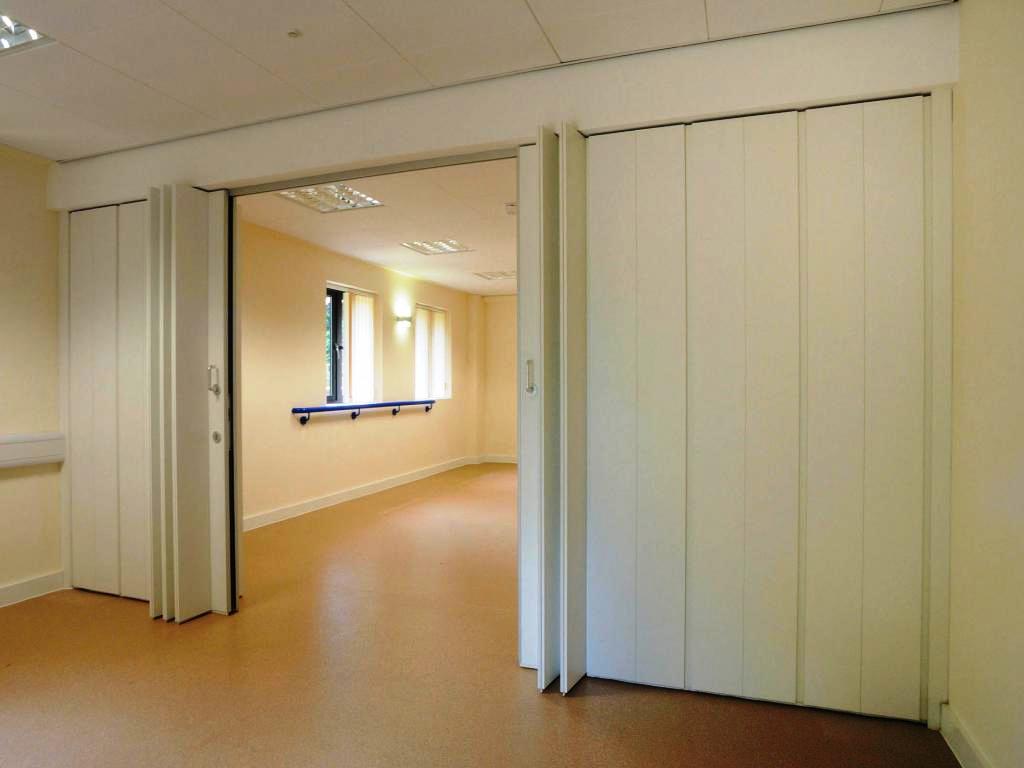
At Ultimate Construction, we’re pros when it comes to sod delivery and installation. If you want to have a lush, green, beautiful lawn, one that will be the envy of your neighborhood, then you can’t go wrong when you choose Ultimate Construction. Here’s a breakdown of how we handle the sod delivery and installation process:
Besides sod delivery and installation, we also do all types of construction-related work. Our prices are fair and our work is guaranteed. So call us today for your free quote.

Small space does not necessarily limit your options. There are plenty of things that can be done even in small spaces if planned well. You can construct it beautifully by optimizing it through some great design ideas.
We all know that our home says a lot about who we truly are. In larger spaces, we have the freedom to stretch our imagination and utilize the space as per our wins. But with a small space, there are always some restrictions. We are surrounded by the constant challenge of capitalizing on the available area and making it look bigger and brighter.
Careful planning and execution are required at each level, be it during conceptualizing or while the construction is in place. Ideas for maintenance to integrating innovative digital devices and applications are essential to achieve the desired results. If you are looking for ideas on how to utilize a small space smartly, then here are some expert tips. These ideas are helpful in smartly constructing and decorating a small space that you can proudly call home.
Let’s have a look at these 7 smart construction ideas for small spaces!

When it comes to a small space, you need to carefully plan the living area and its items, especially the kitchen. Perhaps constructing an open kitchen can be a great idea, wherein the island countertop can also work as a breakfast counter. You can then use sleek furniture or foldable tables and chairs for dining. You can consider installing wall sconces to maximize the surface space. Don’t forget to add cheerful color and texture to set a happy mood for the tiny room. Good ambiance can significantly improve the appearance.

There are many options to save space, and one of those is to slide the doors and windows right into the wall while it is not in use. Many good quality Pocket Doors come attached with great designs and themes. You can also opt for glass windows because glass windows allow some shared light to pass through space by creating separate sections. That way, it will end taking up less space than conventional swinging doors.

Right at the time of construction you have to carefully think of the built-ins and storage space. You can also get your furniture tailored to your exact requirements. Furniture may help you store all the extra items that would otherwise take a lot of space. Carefully plan for all the valuable space needed for storage purposes as it is one of the main problems in small houses with limited space.

Experts and interior designers suggest removing as many unnecessary walls as possible while decorating and offering interior designing solutions to all the clients having a small home. For that reason, you should integrate the space and make it feel more spacious, instead of having multiple small congested rooms. You can always add temporary partitions or gliders to create a sense of division between the spaces.

Your priority should always be utilizing the space optimally. You can take inspiration from others or hire a professional contractor who would also advise you to create a beautiful multipurpose space.

One of the best things you can do when you are confused or unsure of design ideas is to keep it simple. Just opt for standard designs, themes, and colors that would best align with the space to make it look attractive. Do not overdo the décor or add a heavy false ceiling, which makes the room look bulky and congested. We are sure, you don’t want that. So keeping it simple and easy is the key to a beautiful small space.

Choosing the right color may help solve half of your problems. It is recommended to choose light, subtle colors and shades to make the room feel bigger and spacious. Experts advise choosing a single color for all the walls and blending it with a variation for furniture and wardrobes. If you want to add colors, do it with soft furnishings like cushion covers, carpets, or curtains.
Final Word: When it comes to constructing a beautiful home in a small space, hiring the right construction companies in San Antonio TX is advisable. They would take care of everything from the start. Whether you are thinking of a studio apartment or want to get maximum out of a tiny room, good contractors know it all. They will help shape small space into a perfect design.

Connecting your home to a septic system is a critical and also a responsible task. You have to carefully plan before you could execute and see good results because it has to be approved by the local authorities. There are a lot of factors that need to be looked at before installing a septic system in Texas, such as the location and size of the tank, the overall septic system, necessary permits, and the complete installation process. Let’s have a look at all these factors and get some understanding about the septic systems!
Today, there are various types of the septic system in Texas, but the most common types that used in Texas are:
Aerobic septic system laws in Texas
A septic system can be cost-efficient and low maintenance. The good news is that these systems are designed for quick repairs. It is usually nothing more than pulling up a sprinkler pump from a tank and dropping in a new one, replacing the small compressor at the surface, or cleaning or replacing a filter. The chlorine tablets must be added at intervals, but that is just dropping tablets into a tube.
Let’s talk about aerobic septic system laws in Texas.
In the State of Texas, the aerobic septic systems must be inspected 2-3 times a year by authorized septic professional. This is a maintenance program required by the State of Texas and is not optional. Under current State changes in the law, It is now possible to the homeowner to take a certification course and perform the maintenance themselves. Check with the Texas Commission on Environmental Quality
A standard septic system consists of a septic tank and a drain field, or soil absorption field. The septic tank absorbs organic matter and separates floatable material (e.g., oils and grease) and solids from the wastewater.
A standard wastewater system with a soil absorption system is the most cost-effective method available to treat household wastewater. But for it to work properly, you need to choose the right kind of septic system for your household size and soil type, and you need to maintain it regularly.
A low-pressure dosing system treats wastewater and then pumps it into the soil several times daily. It is the least expensive to install and operate. Low-pressure dosing systems cannot be installed in soils that become saturated during wet periods of the year or in shallow soils.
Low-Pressure Dosing systems are transformed standard systems. The processing method and quality are the same, traditional septic tanks, which typically remove about 50% of the biological content of the effluent(wastewater) The rest of the treatment takes place in the soil.
The type of system installed on a property depends on the properties of the soil and regulations set by the Texas Commission on Environmental Quality (TCEQ).
TCEQ (Texas Commission of Environmental Quality) is the body responsible for managing the overall system. It allows an OSSF (On Site Sewage Facility) System to be built on a single-family residence and a 10-acre area. In most regions, local authorities have already started looking that all the requirements must comply.
In most parts of the state, you would find local governments acting as “authorized agents” (AA) of the TCEQ for administering the whole OSSF Program. These agents are responsible for reviewing construction, request for alteration, extension, or repair of OSSF, issuing permits, and routinely inspecting system installation.
There are mainly three types of stages of the wastewater treatment procedure. It is divided into primary, secondary, and tertiary water treatment systems. However, in some exceptional cases, you may require a more advanced treatment called quaternary water treatment.
A minimum of half an acre per dwelling unit is required to put a septic system. Usually, a permit through local authorities is required for any septic system installation. Depending upon the outcome of the test, the relevant body may or may not issue the permit. In case they find it unfavorable, then suggestions on alternative means would be provided. There are other factors that you should take into account. They are as follows:
The size of the tank depends on the number of bedrooms and the number of occupants per house. The more the number of bedrooms and occupants, the larger the tank. Usually, for three bedrooms, the size comes out to be roughly around 1,000-gallon tanks. It is advisable to check with your local contractor for better inputs as they are aware of the local requirements.
There is a lot more to it than just installation. It includes designing, crafting, and the installation process. Requirements also vary by county or city. To ensure the installation process is correct, you should go for a fully licensed septic system. One must comply with their local laws to ensure there are no discrepancies in later stages, be it disposal of wastewater, plot area, or installation method of septic systems.
Often in San Antonio, construction contractors are called to inspect the location before seeking necessary permits. The plan is then shared with the local state bodies before the actual work gets underway.
In the Texas region you can expect to shed somewhere around $3ooo to $6ooo for a good septic tank installation. Again, it is subject to your requirements like the type of septic system, the size and the area you are installing it in. The more the number of rooms and occupant, the higher the input needed.
If you are looking for more details and the exact costs etc, you must get in touch with good construction contractors in San Antonio. They have a better understanding of all the local rules and permits needed for septic system installation.

A beautifully crafted lawn can transform an average house into a posh property. Skilled landscaping not just gives you a beautiful outdoor living area but also raises the property worth. To get the most reliable results, you must find the right landscaping company for the job. And that’s exactly where the real challenge occurs. Finding a good company can be tough, but we’ll make it a little easier for you. Here’re some of the things which you should keep in mind to choose the best landscaping company:

Before the negotiation part, first check the company’s profile, their history, and previous projects. They must have all the certifications and documents to substantiate that they are legally authorized to carry out the project, and are thoroughly insured & bonded to safeguard against any potential damages, both to the home and to its workers. Confirm all these aspects to get your project done with complete peace of mind.
You can do this research on your own. Check Google reviews, testimonials on their website, and social profiles to get a pulse of how much they care about the clients. Also, look for companies who have expertise, experience, and can provide references from past clients.

Make sure both, you and landscaper, have a clear picture of your expectations from the project and their requirements to give you expected results. A good company will set out the agreement and timelines at the beginning of the project, so you know when you’ll get your landscape ready. They share detailed plans for the work in phases. It saves you from any surprises in the middle of the project. Put all your expectations and requirements on paper. Landscaping involves lifting heavy equipment and tools by the workers, so check safety measures and also ensure if your property is protected from any damages.

Before finalizing the landscape contractor, you should compare all potential contractors. Explore all the options online and offline. Ask your family members and friends for references. Sometimes you find a trustable contractor from references. Talk to as many contractors as possible, ask about packages they offer, any additional offer they are giving, or what expertise they have. Don’t for their claims to be the best, ask questions and compare all to get a better landscaper.

There are certain things that you should keep in mind to determine if a company is professional or not:
A professional company cares for its potential customers and clears all questions/doubts before starting the project. You can sense it while speaking to them. A reliable contractor would not want to start working on a project while you stay confused. They’ll make sure you are satisfied with every aspect of the project.
Choosing the right landscaping contractor gives peace of mind for the success of your landscaping project. If they have the skills and expertise, you don’t have to stress about any significant problem in the future. Professional contractors can make the whole landscaping experience seamless, smooth, and stress-free.
We’d love to be your landscape contractor in San Antonio. If you have any doubts or questions or would like to get a free estimate on your project, contact us or give us a call. We are here to help!

When constructing a home or renovating an existing property in Texas, you should keep yourself abreast of all the guidelines and regulations otherwise you can get yourself fined by Texas authority.
Homeowners have to seek approvals before constructing septic systems. If you are searching for information related to Septic Systems then you are at the right place.
But before we find out more about those guidelines that can protect you from fines for illegal septic system, let’s first understand what a septic system is!
Septic systems are inbuilt underground wastewater treatment systems. They are commonly built-in places that lack a centralized sewer system.
It uses a combination of technological solutions to effectively treat wastewater from a household. It treats or disposes of waste material and water discharged by bathrooms, kitchen, drains, and laundry.
A common septic system consists of a septic tank and a drain field, or in some cases a soil absorption field too.
Septic tanks decompose and digest all the organic matter. It also filters out other components such as oils and grease and solids from the wastewater.
There are some other alternative systems available too. They use pumps to help remove or neutralize pollutants. Whereas some alternative systems are built to evaporate the wastewater and disinfect it way before it is discharged to the soil. Septic systems are probably your best choice if you are looking for wastewater removal.
In Texas, everything is carefully looked at. It holds for septic tank requirements too. You have to be on top of everything. Take good care of site evaluations, permits, and authorized septic system installation procedures.
Before you install a new septic tank or decide to upgrade the existing one. Your first and foremost requirement is to ensure you have proper permits in place.
The state of Texas requires a permit (With some exceptions though) for the majority of the septic tank installations. If the septic tank meets the required criteria then you may not need a permit. Local authority permits usually have much more stringent standards. This is in addition to Texas state requirements.
Failure to comply with your local guidelines may attract hefty fines and penalties because of non-compliance.
A homeowner can be prosecuted or may also suffer legal penalties for using an inadequate or unlawful septic system. Others who oversee such construction may also face punishments including license revocation.
The bottom line is that you have to ensure you follow all the frameworks and comply with the local laws before you construct a septic system and beware from fines of the illegal septic system in Texas.
Refer to your Local health department or Office of the Texas Commission on Environmental Quality. They assist you in helping you find the relevant authorities responsible for granting permits.
An offense under this section is a misdemeanor punishable by a fine of not less than $50 or more than $200.
Subsequent Conviction is Ever Punishable by a fine of not less than $200 or more than $1,000, or confinement in jail for not more than six months.
Your contractor can help you with this. They would help you with inspections and seek final approval for on-site sewage systems.
The state of Texas requires you to conduct a site evaluation properly of the area where you plan to install it. This is done only by a licensed site evaluator. The sole objective of doing this is to determine the soil quality and to ensure it is compatible with the conditions.
Restrictions apply to the septic systems largely upon the area and the number of people in a household. You should hire a consultant. or refer to your local site evaluation guidelines. It helps find factors like groundwater levels, soil quality, rock horizons, and minimum depths to choose the proper system.
You should hire good Construction Contractors in San Antonio to ensure you don’t face any trouble. Reliable Contractors would stand by you and help you arrange all the permits and meet regulatory compliances.

Gravel roads are and an excellent alternative to mulch and patio paving in gardens. These unpaved roads are usually surfaced with gravel in landscape setup for more reliable drainage. Many people construct a gravel road by themselves as a DIY project. But construction of a good quality gravel road is not an easy task. It takes a lot of planning, preparation and the proper use of resources. By following correct fundamentals, you can build a smooth and uniform road that can withstand all kinds of loads.
Having a good understanding of resources and knowing the specifications can help you build a gravel road that will not break easily even in extreme weather conditions. Today we will discuss everything about Gravel Road construction, from specifications, maintenance to the cost.
Read also: Gravel Road Construction Isn’t Easy
Gravel road construction specifications: Here are various terminologies used during the construction of gravel roads.
Now that you know about the basic terms, let’s head forward.
To achieve good results, you should be aware of the common tolerance levels used. Although a general contractor would make you aware of the specification during the gravel road construction, it is always good to know these basics.
The typical surface level of the layer measures for construction are as follows:
In case tolerance exceeds, the builder should take the relevant steps. Grade and alignment are other crucial aspects that need to be monitored closely. In professional construction, it is set and maintained by the contractor after the assessment by the engineer.
There should be proper arrangements for the quick outflow of water that may deposit in and around the construction site. The general contractors take care of it. It is the builder’s responsibility to make arrangements for drains and pumps to keep the roadwork water-free.
Usually, the materials required for sub-grade are excavated from around the region. As long as it is approved, the contractor can excavate or probably cut to sub-grade level. All unnecessary materials are removed from the sub-grade and then further compacted as per the requirements and specifications. It is advisable to keep the sub-grade protected and well-drained.
Natural sand and gravel mixture must be used of a good grade. It should be free from any deficiencies or damaging elements. It provides the much-needed underlying layer.
The material must be well-graded crushed stone and should be free from impurities such as natural river gravel.
Gravel roads last significantly longer when they have proper drainage. Crowns and shoulders should be properly shaped so the water can easily channel away from the surface of the road. Regular grading of gravel roads is key to keep them in good condition. Reshaping, clearing the drainage system and removing any extra material is also advisable for proper maintenance routine.
Well, the final cost depends heavily upon the length of the road and materials used. The project cost varies from area to area depending upon the miscellaneous costs as well. It is advisable to get in touch with contractors near you for better clarity on cost break up.
The contractor you are going to hire plays a vital role in the quality and cost of the gravel road. Make sure they have the expertise to build the road successfully.
Ultimate Construction is a trusted name in all types of general construction work. Our team arranges everything, so you don’t have to worry about any aspects of the gravel road construction process. At Ultimate Construction, we work closely with our clients, so we can deliver exactly what they want. High standards of service, timely delivery, and transparency in rates is our motto. Contact us today for your project quote!

A road without blacktop is no less a road. Gravel road construction requires a myriad of skills. Detailed understanding of the terrain, proficiency in drainage issues, and extensive knowledge of various building materials is essential. How does concrete react to temperature? Why should you avoid limestone? How much gravel is needed per square foot? Should soil be removed before hand? How much? These are all questions that an expert in gravel road construction can answer. Building and maintaining a gravel or “dirt” road is no small task. A seemingly minor error in design, materials, or construction can have expensive—even dangerous—consequences for years to come.
A new road begins by surveying the land, determining the depth of the base needed, and noting any sandy or swampy areas that will require special attention. Next, we inspect the area where the road will be to pinpoint potential issues and address them before they can develop. This information is then used to select appropriate materials for the base, sub-grade, and sub-base layers. These will be packed down into a base layer and then covered with gravel. Choosing the right gravel for an area reduces dust, weeds, debris, and increases driver satisfaction. We’re here to make sure construction goes smoothly every step of the way.
In addition to new gravel road construction, we’re proficient in fixing issues with your existing roads. While any contractor can repair a foundation or lay new gravel, our experts get to the root of the problem. We know what’s needed to fix your road and keep it in good condition. We know whether or not your roadbed needs to be graded, whether more material is needed, or even whether you need a surface stabilizer. Drainage issues cause softness, which can lead to ruts developing. Ruts can also develop for other reasons too, which is why it can save you time and money to let a professional handle the task from start to finish.